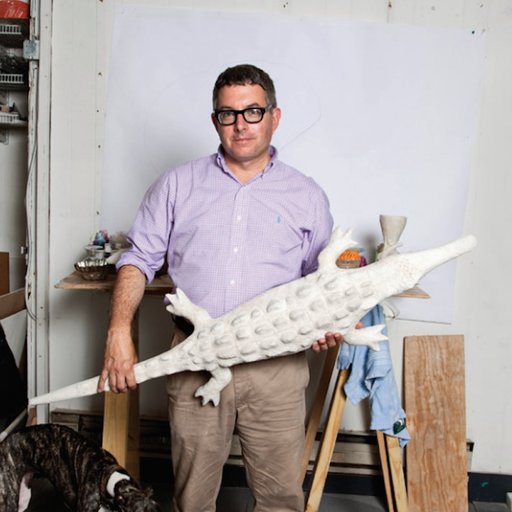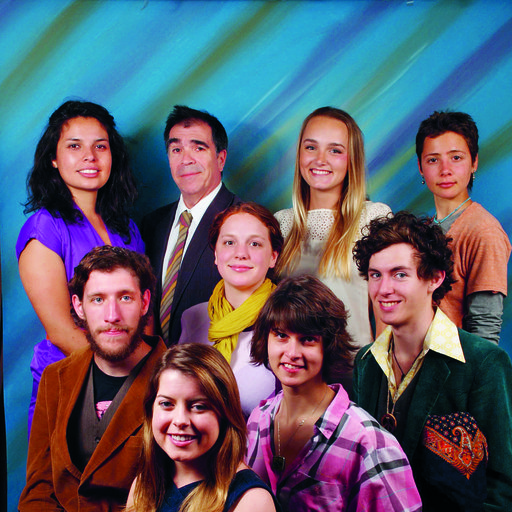One of the most influential performance artists to ever work in the medium, Marina Abramović is known for performances like the Rhythm series (1973-75) and The Artist is Present (2010) that combine high-level conceptualism, physical discomfort, and a certain mystical mindset to create unforgettable, visceral experiences for both herself and her audience. Here, Abramović shares her list of axioms for artists to live by, excerpted in its entirety from the new book AKADEMIE X: Lessons in Art + Life.
AN ARTIST’S CONDUCT IN HIS LIFE
• An artist should not lie to himself or to others
• An artist should not steal ideas from other artists
• An artist should not compromise himself with regard to the art market
• An artist should not kill other human beings
• An artist should not make himself into an idol
• An artist should not make himself into an idol
• An artist should not make himself into an idol
AN ARTIST’S RELATION TO HIS LOVE LIFE
• An artist should avoid falling in love with another artist
• An artist should avoid falling in love with another artist
• An artist should avoid falling in love with another artist
AN ARTIST’S RELATION TO THE EROTIC
• An artist should develop an erotic point of view on the world
• An artist should be erotic
• An artist should be erotic
• An artist should be erotic
AN ARTIST’S RELATION TO SUFFERING
• An artist should suffer
• From suffering comes the best work
• Suffering brings transformation
• Through suffering an artist transcends his spirit
• Through suffering an artist transcends his spirit
• Through suffering an artist transcends his spirit
AN ARTIST’S RELATION TO DEPRESSION
• An artist should not be depressed
• Depression is a disease and should be cured
• Depression is not productive for an artist
• Depression is not productive for an artist
• Depression is not productive for an artist
AN ARTIST’S RELATION TO SUICIDE
• Suicide is a crime against life
• An artist should not commit suicide
• An artist should not commit suicide
• An artist should not commit suicide
AN ARTIST’S RELATION TO INSPIRATION
• An artist should not lie to himself or to others
• An artist should look deep inside himself for inspiration
• The deeper he looks inside himself, the more universal he becomes
• The artist is universe
• The artist is universe
• The artist is universe
AN ARTIST’S RELATION TO SELF-CONTROL
• The artist should not have self-control about his life
• The artist should have total self-control about his work
• The artist should not have self-control about his life
• The artist should have total self-control about his work
AN ARTIST’S RELATION TO TRANSPARENCY
• The artist should give and receive at the same time
• Transparency means receptivity
• Transparency means to give
• Transparency means to receive
• Transparency means receptivity
• Transparency means to give
• Transparency means to receive
• Transparency means receptivity
• Transparency means to give
• Transparency means to receive
AN ARTIST’S RELATION TO SYMBOLS
• An artist creates his own symbols
• Symbols are an artist’s language
• The language must then be translated
• Sometimes it is difficult to find the key
• Sometimes it is difficult to find the key
• Sometimes it is difficult to find the key
AN ARTIST’S RELATION TO SILENCE
• An artist has to understand silence
• An artist has to create a space for silence to enter his work
• Silence is like an island in the middle of a turbulent ocean
• Silence is like an island in the middle of a turbulent ocean
• Silence is like an island in the middle of a turbulent ocean
AN ARTIST’S RELATION TO SOLITUDE
• An artist must make time for long periods of solitude
• Solitude is extremely important
• Away from home
• Away from the studio
• Away from family
• Away from friends
• An artist should stay for long periods of time at waterfalls
• An artist should stay for long periods of time at exploding volcanoes
• An artist should stay for long periods of time looking at fast-running rivers
• An artist should stay for long periods of time looking at the horizon where the ocean and sky meet
• An artist should stay for long periods of time looking at the stars in the night sky
AN ARTIST’S CONDUCT IN RELATION TO WORK
• An artist should avoid going to the studio every day
• An artist should not treat his work schedule as a bank employee does
• An artist should explore life and work only when an idea comes to him in a dream or during the day as a vision that arises as a surprise
• An artist should not repeat himself
• An artist should not overproduce
• An artist should avoid his own art pollution
• An artist should avoid his own art pollution
• An artist should avoid his own art pollution
AN ARTIST’S POSSESSIONS
• Buddhist monks advise that it is best to have nine possessions in one’s life:
1 robe for the summer
1 robe for the winter
1 pair of shoes
1 begging bowl for food
1 mosquito net
1 prayer book
1 umbrella
1 mat to sleep on
1 pair of glasses if needed
• An artist should decide for himself the minimum personal possessions he should have
• An artist should have more and more of less and less
• An artist should have more and more of less and less
• An artist should have more and more of less and less
A LIST OF AN ARTIST’S FRIENDS
• An artist should have friends who lift his spirits
• An artist should have friends who lift his spirits
• An artist should have friends who lift his spirits
A LIST OF AN ARTIST’S ENEMIES
• Enemies are very important
• The Dalai Lama has said that it is easy to have compassion for friends but much more difficult to have compassion for enemies
• An artist has to learn to forgive
• An artist has to learn to forgive
• An artist has to learn to forgive
DIFFERENT DEATH SCENARIOS
• An artist has to be aware of his own mortality
• For an artist, it is not only important how he lives his life but also how he dies
• An artist should look at the symbols of his work for the signs of different death scenarios|
• An artist should die consciously without fear
• An artist should die consciously without fear
• An artist should die consciously without fear
DIFFERENT FUNERAL SCENARIOS
• An artist should give instructions before his funeral so that everything is done the way he wants it
• The funeral is the artist’s last art piece before leaving
• The funeral is the artist’s last art piece before leaving
• The funeral is the artist’s last art piece before leaving
ASSIGNED READING AND VIEWING
READING:
– Graham-Dixon, Andrew. Caravaggio: A Life Sacred and Profane. New York: W. W. Norton & Company, 2011.
Caravaggio had a fascinating life. He somehow succeeded in making fantastic work from his personal mess of thievery and murder that changed the way paintings were made.
– McEvilly, Thomas. Yves the Provocateur: Yves Klein and Twentieth-Century Art. New York: McPherson & Co., 2010.
This should be inspirational for the young performance artist.
– Ouspensky, P. D. In Search of the Miraculous. New York: Harcourt, Brace & World, Inc., 1949.
This was an important book for me to start understanding and thinking about different realities.
VIEWING:
– Parajanov, Sergei, dir. Sayat Nova (The Colour of Pomegranates). Cosmos Film, 1968. Film.
This is one of the most beautiful films ever made. I feel deeply connected to Parajanov’s work.
– Pasolini, Pier Paolo, dir. Teorema (Theorem). Euro International Film, 1968. Film.
This film will show the student, in very original ways, the questioning of morality.
– Resnais, Alain, dir. L’Année Dernière à Marienbad (Last Year in Marienbad). Cocinor-Marceau, 1961. Film.
This is a captivating film about time and memory, two themes that interest me very much. Additionally, I believe a lot can be learned from looking at the way in which the film is edited.
























